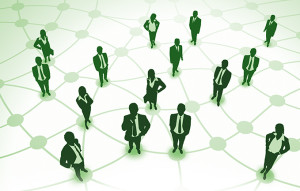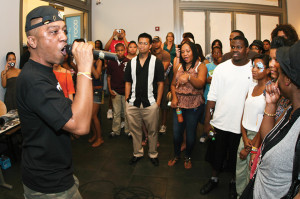Despite gains in the recent elections, those who are lesbian, gay, bisexual, transgender, or questioning (LGBTQ)—especially youth—are still targets of bullying, harassment, violence, and discrimination. Because of that fact, this group can benefit from libraries in two distinct ways: through the access to information that libraries offer and the sense of community that library programs can foster.
Without a doubt, the past decade has experienced a sea change in favor of LGBTQ rights. During the 2012 election, voters decided on a series of landmark ballot initiatives at the state level that championed marriage equality; a sitting president (and vice president) has for the first time voiced support for same-sex marriage; and the military’s “don’t ask, don’t tell” policy has been overturned. Yet there is still much work to be done. To this end, libraries are taking an active role as safe spaces where LGBTQ people can gather, have access to essential information and resources, and be a part of their communities.
As librarians, we are always trying to leverage our collections, services, and resources for the good of our patron base. This includes trying to meet the needs of distinct populations within that base. LGBTQ people can be found in almost every community, so it behooves librarians to figure out how our libraries can serve this group.
During the 2012 ALA Annual Conference in Anaheim, the Gay, Lesbian, Bisexual, and Transgender Round Table (GLBTRT) hosted a program called “Fabulous Havens: Libraries as Safe Spaces for the Needs of LGBTQ Youth.” During this program, Jenny Betz of the Gay, Lesbian, and Straight Education Network (GLSEN) shared many ways in which libraries can effectively reach out to this group. The great news is that so many libraries are already taking positive steps to show youth and the broader LGBTQ population that they are welcome and safe in their libraries.
First off, how can we ensure that users feel comfortable the moment they walk in the door? By having friendly, welcoming staff members who are trained and ready for them inside. The inmate clerks of the library at the Correctional Training Facility in Soledad, California, underwent the GLSEN training and immediately implemented it after Annual Conference. It was so successful that transgender inmates reported feeling more comfortable talking with the clerks than they did before. Librarian Elizabeth Marshak told me that many transgender inmates at the facility now say they view the library as a safe space. The library also posted signs stating “A few rules of the library: Respect each other, respect the library, be open to learning.”
It behooves librarians to figure out how our libraries can serve LGBTQ people.
A number of other libraries—like the Bellevue (Wash.) College Library Media Center; the University of Iowa Libraries in Iowa City; and the University of Missouri–Kansas City (UMKC) Libraries—have liaisons to their institutions’ gay-straight alliances or LGBTQ resource centers. In the cases of UMKC and Holy Names University in Oakland, California, this kind of outreach has led groups to use library space to meet and hold events. This can be especially critical for student groups at institutions where they cannot find a staff advisor and are not permitted to operate a gay-straight alliance without one.
At the University of Tennessee, Knoxville, a librarian helped establish the university’s first LGBTQ organization: the Commission for LGBTQ People. At the University of Kansas in Lawrence, a librarian sat in on the “Perspectives in LGBT Studies” course so that students would become familiar with the librarian and feel comfortable asking questions about LGBTQ issues, which can oftentimes be uncomfortable for LGBTQ and straight folks alike. It was so successful that it resulted in a research fair that highlighted various topics from the class.
Of course, we can collect every last LGBTQ item out there, but the information needs to be findable. Many libraries have created pathfinders and guides; some are using LibGuides and have leveraged it or a similar system to highlight titles in their collections. Georgia State University Library in Atlanta has a particularly comprehensive guide that fully integrates every facet of its collection, search tips, and connections to the community.
One easy way to make the library more visible to the community is through Pride celebrations in June. The District of Columbia Public Library (DCPL), for example, garnered support from its Friends groups and put together a presence at DC’s Pride festival, allowing the library to have an informative booth and sign up 77 new patrons via iPad, which staffers also used to lend books onsite. DCPL even sent out roving trivia teams to help people win giveaway goodies.
But Pride Month isn’t the only time of year to put on programs for LGBTQ patrons; just ask the Sacramento (Calif.) Public Library about its “You belong @ your library” campaign. It involved everything from “It Gets Better” filming to a Rainbow Family Egg Hunt event around Easter to a “Come Out! for Aerobics” session. The outreach continues: The library has scheduled Rainbow Family storytimes, a great way of showing that all families are welcome year-round.


